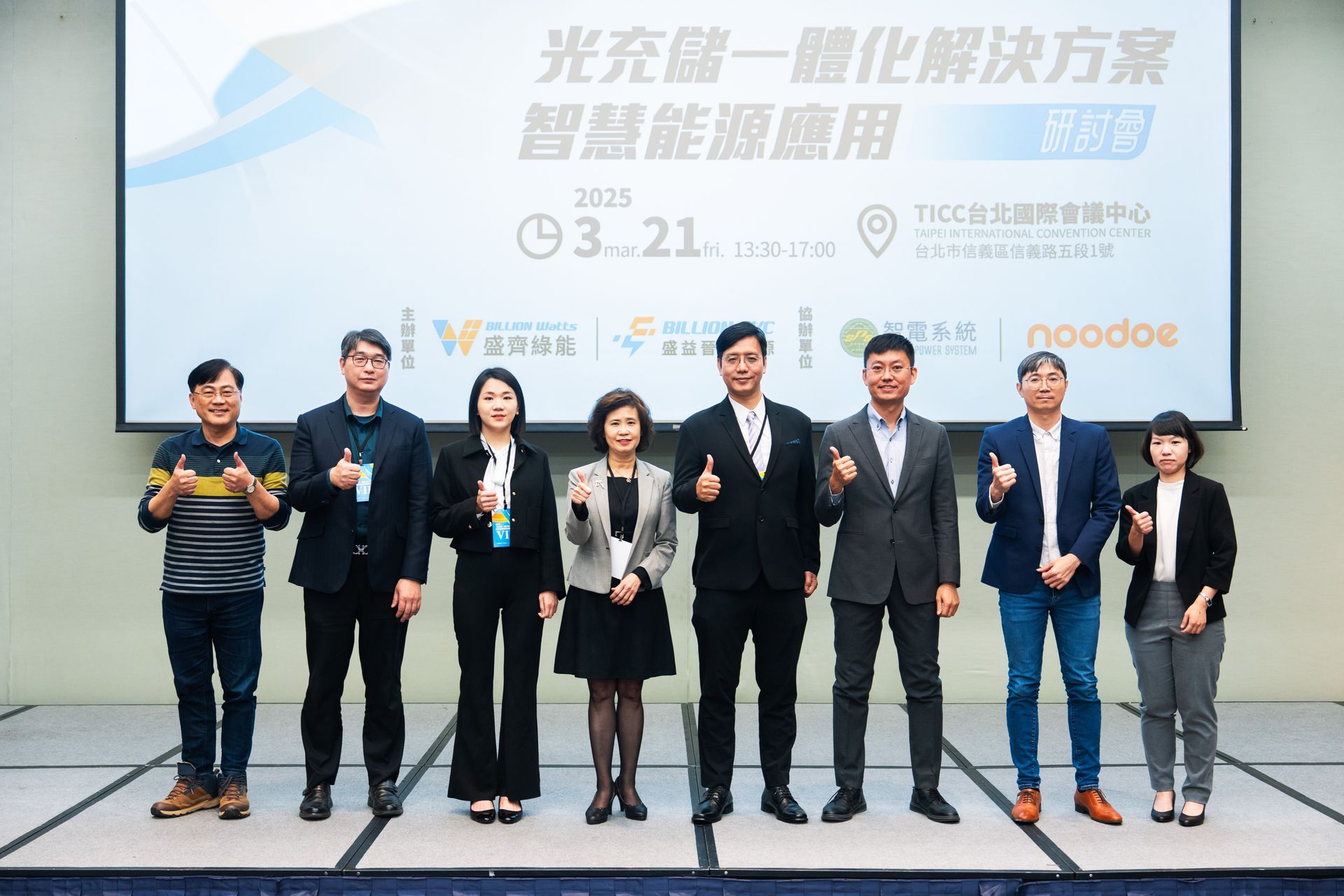News & Media

By Billion Watts
•
September 26, 2025
Billion Electric Co., Ltd. (“Billion Electric,” TSE: 3027) today announced that its Board of Directors and the Board of Directors of its 61.98%-owned subsidiary, Billion Watts Technologies Co., Ltd. (“Billion Watts”), have approved a share conversion plan. Under the resolution, Billion Electric will issue new shares to all existing shareholders of Billion Watts other than Billion Electric. Following the approval of Billion Watts’ Extraordinary General Meeting scheduled for October 8, 2025, and Billion Electric’s filing with regulatory authorities, the conversion is expected to be completed on February 2, 2026. Upon completion, Billion Watts will become a wholly owned subsidiary of Billion Electric. This transaction represents a key strategic initiative by Billion Electric to respond to industry transformation and optimize its group structure. Going forward, the Company will position renewable energy as its core business, supported by complementary power management and networking operations.

By Billion Watts
•
August 12, 2025
With the government encouraging self-built energy storage, a central Taiwan hotel operator has installed Billion Watts energy storage cabinets to enhance power supply quality, reduce electricity costs, and create a space-efficient energy storage design with flexible dispatch capabilities.

By Billion Watts
•
June 19, 2025
The solar-storage-charging demonstration site at Chunghwa Telecom Institute in Kaohsiung was delivered as a turnkey project by Billion Watts, integrating solar PV, energy storage, and EV charging facilities. With a solid track record of behind-the-meter (BTM) storage deployments, the company showcases strong integration capabilities and proven field experience in BTM energy applications.

By Billion Watts
•
September 26, 2025
Billion Electric Co., Ltd. (“Billion Electric,” TSE: 3027) today announced that its Board of Directors and the Board of Directors of its 61.98%-owned subsidiary, Billion Watts Technologies Co., Ltd. (“Billion Watts”), have approved a share conversion plan. Under the resolution, Billion Electric will issue new shares to all existing shareholders of Billion Watts other than Billion Electric. Following the approval of Billion Watts’ Extraordinary General Meeting scheduled for October 8, 2025, and Billion Electric’s filing with regulatory authorities, the conversion is expected to be completed on February 2, 2026. Upon completion, Billion Watts will become a wholly owned subsidiary of Billion Electric. This transaction represents a key strategic initiative by Billion Electric to respond to industry transformation and optimize its group structure. Going forward, the Company will position renewable energy as its core business, supported by complementary power management and networking operations.

By Billion Watts
•
August 12, 2025
With the government encouraging self-built energy storage, a central Taiwan hotel operator has installed Billion Watts energy storage cabinets to enhance power supply quality, reduce electricity costs, and create a space-efficient energy storage design with flexible dispatch capabilities.

By Billion Watts
•
September 26, 2025
Billion Electric Co., Ltd. (“Billion Electric,” TSE: 3027) today announced that its Board of Directors and the Board of Directors of its 61.98%-owned subsidiary, Billion Watts Technologies Co., Ltd. (“Billion Watts”), have approved a share conversion plan. Under the resolution, Billion Electric will issue new shares to all existing shareholders of Billion Watts other than Billion Electric. Following the approval of Billion Watts’ Extraordinary General Meeting scheduled for October 8, 2025, and Billion Electric’s filing with regulatory authorities, the conversion is expected to be completed on February 2, 2026. Upon completion, Billion Watts will become a wholly owned subsidiary of Billion Electric. This transaction represents a key strategic initiative by Billion Electric to respond to industry transformation and optimize its group structure. Going forward, the Company will position renewable energy as its core business, supported by complementary power management and networking operations.

By Billion Watts
•
August 12, 2025
With the government encouraging self-built energy storage, a central Taiwan hotel operator has installed Billion Watts energy storage cabinets to enhance power supply quality, reduce electricity costs, and create a space-efficient energy storage design with flexible dispatch capabilities.

By Billion Watts
•
June 19, 2025
The solar-storage-charging demonstration site at Chunghwa Telecom Institute in Kaohsiung was delivered as a turnkey project by Billion Watts, integrating solar PV, energy storage, and EV charging facilities. With a solid track record of behind-the-meter (BTM) storage deployments, the company showcases strong integration capabilities and proven field experience in BTM energy applications.

By Billion Watts
•
May 5, 2025
Billion Watts has been honored with two prestigious titles at the 23rd Golden Peak Awards: “Top 10 Outstanding Enterprises” and “Top 10 Outstanding Leaders” for its Co-founder and General Manager, Elaine Chen—recognizing its tangible achievements in green energy integration and system innovation.

By Billion Watts
•
April 14, 2025
Group photo of all speakers and guests at the “Integrated Solar, Storage & EV Charging Solutions and Smart Energy Applications Forum” hosted by Billion Watts on March 21 at the Taipei International Convention Center—signifying the industry’s transition into practical smart energy integration.




